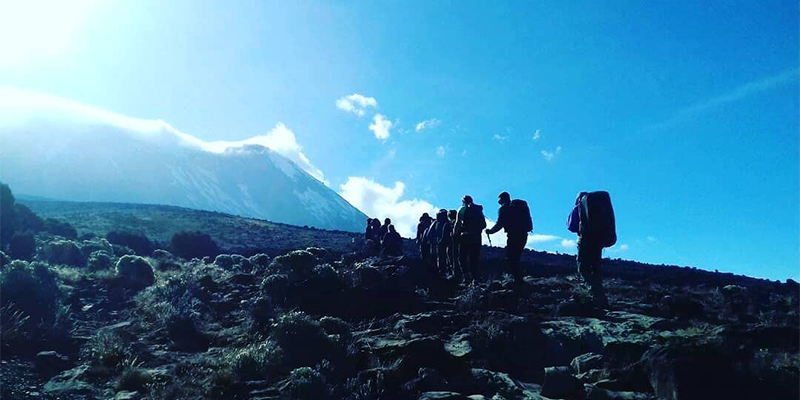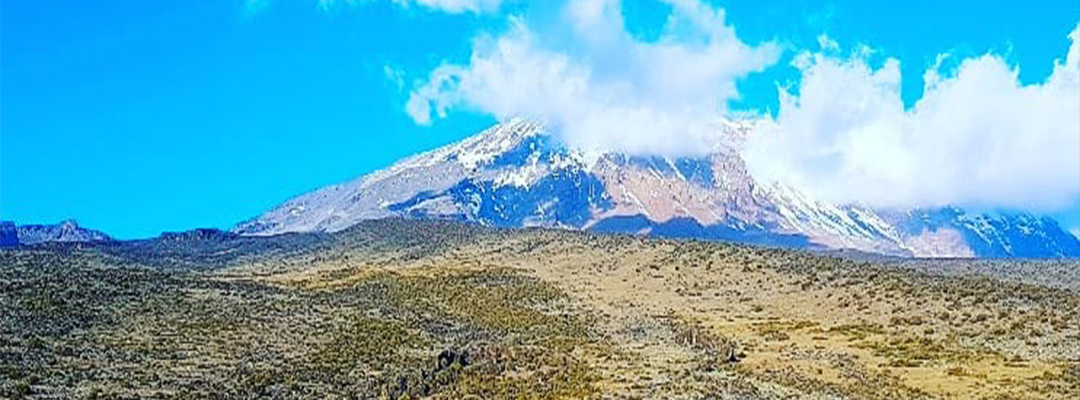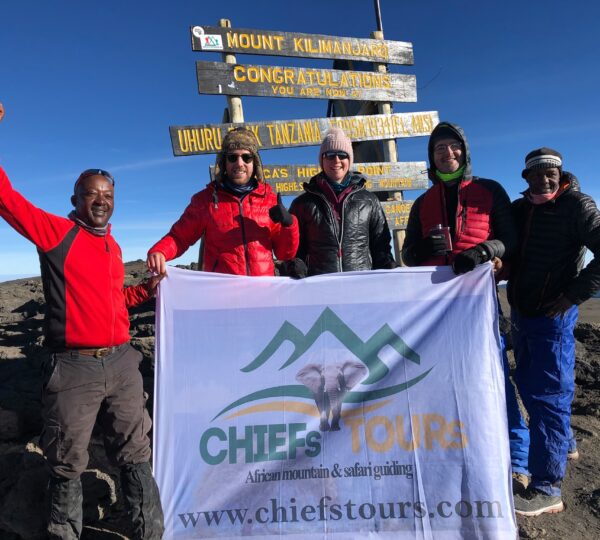7-Day vs 8-Day Lemosho is a practical dilemma for many who wish to achieve the dream of climbing Kilimanjaro.
In this detailed Kilimanjaro route comparison, we’ll break down the pros, cons, and subtle differences between the 7-day and 8-day Lemosho itineraries plus, we’ll share a few real-world stories from the mountain to help you make an informed decision.
Why Lemosho Route? A Quick Overview
Before diving into the day-by-day comparisons, let’s understand the basics of the Lemosho Route.
The Lemosho Route starts on the western side of Kilimanjaro and navigates across some of the mountain’s most remote and wild terrain. It offers a gradual ascent profile which is ideal for acclimatization and delivers amazing views from day one.
From lush rainforest to alpine desert, and finally to the icy summit, this route is the full Kilimanjaro experience.
Because Lemosho provides such a full Kilimanjaro experience, it is the first choice for many climbers who wish to summit Africa’s highest mountain.
7-Day vs 8-Day Lemosho: The Key Difference
The main difference is an extra acclimatization day usually added at either Shira 2 Camp or Karanga Camp. While the route and scenery are mostly the same, that single day can have a massive impact on your success rate and overall experience.

7-Day vs 8-Day Lemosho: Day-by-Day Comparison
| Day | 7-Day Lemosho | 8-Day Lemosho |
| Day 1 | Lemosho Gate to Mti Mkubwa | Same |
| Day 2 | Mti Mkubwa to Shira 2 Camp | Mti Mkubwa to Shira 1 Camp |
| Day 3 | Shira 2 to Barranco via Lava Tower | Shira 1 to Shira 2 Camp |
| Day 4 | Barranco to Karanga | Shira 2 to Lava Tower, then descend to Barranco Camp |
| Day 5 | Karanga to Barafu | Barranco Camp to Karanga Camp |
| Day 6 | Summit Day + descend to Mweka Camp | Karanga Camp to Barafu Camp |
| Day 7 | Mweka Camp to Mweka Gate | Barafu Camp to Uhuru Peak, then descend to Mweka Camp |
| Day 8 | — | Mweka Camp to Mweka Gate |
7-Day vs 8-Day Lemosho: Acclimatization and Success Rates
Here’s a hard truth we’ve learned after guiding over 300 groups to the summit: time is your greatest ally on Kilimanjaro.
Adding that extra day means:
- Better acclimatization
- Higher summit success rate (often 95%+ on the 8-day route)
- Less physical and mental stress
Practical Scenario:
“We once guided a couple in their mid-60s on the 8-day Lemosho. They took their time, hydrated like champions, and made it to Uhuru Peak. On the other hand, we’ve seen marathon runners struggle on the 7-day trek. Altitude doesn’t care how fit you are, it cares how well you acclimatize.”
What is an Acclimatization Day and Why Does It Matter So Much?
When we talk about acclimatization on Kilimanjaro, we’re talking about your body adjusting to the decreasing levels of oxygen as you gain altitude. The higher you go, the thinner the air—and the less oxygen your body has to work with.
An acclimatization day is a dedicated extra day built into your itinerary to help your body adapt to these changes. It doesn’t mean resting in your tent all day. Quite the opposite, it’s an intentional part of your journey, and how you use that day can make or break your summit attempt.
What Happens During the Acclimatization Day on our 8-Day Lemosho Itinerary?
Our 8-day Lemosho itineraries include an acclimatization day at Shira 2 Camp.
Here’s what that day looks like:
- Gradual Elevation Gain: Only 240 meters net elevation, reducing strain while still promoting adaptation.
- Optional Side Hike: The Shira Cathedral detour adds exertion and altitude exposure without compromising recovery.
- Diverse Terrain: Moorland walking provides varied pacing, encouraging your heart and lungs to work just enough.
- Strategic Acclimatization: This day supports the body’s natural adjustment to lower oxygen levels before tackling higher altitudes ahead.
Why Acclimatization Days Increase Your Chances of Summiting
From our experience, adding just one day increases your summit success rate from about 70% to over 90% on the Lemosho Route. Here’s why:
- Your body gets used to lower oxygen slowly, so it doesn’t go into shock at high altitudes.
- You experience less severe symptoms of altitude sickness, meaning you eat better, sleep better, and feel stronger.
- You reach Barafu Camp (base camp) better rested and more confident, setting you up for a successful summit night.
Pros and Cons: 7-Day vs 8-Day Lemosho
7-Day Lemosho
Pros:
- Shorter time commitment
- Slightly lower cost
- Still a relatively well-paced trek
Cons:
- Less time to adjust to altitude
- Lower success rate (approx. 70–75%)
- More physically demanding with fewer rest opportunities
8-Day Lemosho
Pros:
- Excellent acclimatization
- Higher summit success rate
- More relaxed pace = better experience
Cons:
- Higher cost due to extra day
- Requires more time off
What Julius Minja, our Kilimanjaro Head Guide says on the 7-Days vs 8-Day Lemosho debate:
“If I had to choose one route to recommend to first-time climbers, it’s the 8-day Lemosho, every single time. It’s the closest thing to a sure bet on Kilimanjaro.”
Tips to help you, whether you choose the 7-Day or 8-Day Lemosho Route
Whether you’re a solo hiker, couple, or adventure group:
- Hydrate religiously: Aim for 3–4 liters a day. Dehydration worsens altitude sickness.
- Pole Pole (Slowly, Slowly): Don’t try to win the trail. A slower pace gives your body time to adapt.
- Sleep matters: The extra night on the 8-day route means better recovery. Take advantage of it.
- Don’t skip the gear check: A bad pair of boots or thin gloves can ruin your summit night.
7-Day vs 8-Day Lemosho: Our Verdict
If you’re short on time or already have experience trekking at altitude, the 7-day Lemosho can be a good option just be mentally prepared for the challenge.
But if your priority is reaching the summit and enjoying the journey with less stress on your body, the 8-day Lemosho Route is the clear winner.
Climbing Kilimanjaro is more than just ticking off a bucket list, it’s a journey that will test your endurance, patience, and determination. And the route you choose plays a huge role in shaping that journey.
Having guided climbers from age 6 to 90, we can confidently say: take the longer route if you can. Give yourself the best chance to stand on Uhuru Peak and take in that golden sunrise over Africa.
Our 7-Day vs 8-Day Lemosho Itineraries Prices
| Number of People | 1 pax | 2 pax | 3 pax | 4 pax | 5 pax | 6 pax | 7 pax | 8+ pax |
|---|---|---|---|---|---|---|---|---|
| 7-Day | $1950 | $1910 | $1870 | $1840 | $1810 | $1740 | $1700 | $1660 |
| 8-Day | $2228 | $2208 | $2188 | $2168 | $2148 | $2128 | $2108 | $2088 |


